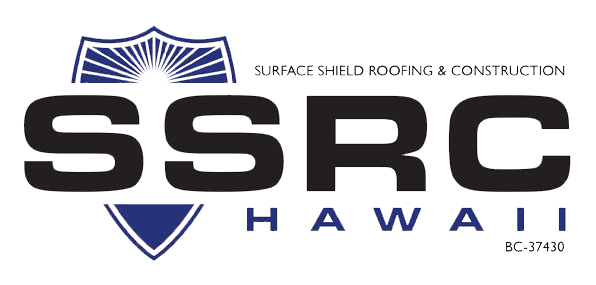The Ultimate Checklist for Roofing Install: Making Certain Top Quality and Longevity
The procedure of setting up a roof needs cautious attention to information. A comprehensive checklist can help assure quality and longevity throughout the project. From reviewing the existing roof covering condition to choosing the best products, each action is vital. Proper preparation and tools play a crucial function in accomplishing an effective setup. Lots of overlook the value of final inspections and ongoing upkeep. Recognizing these components can greatly affect the longevity of a brand-new roofing system.
Analyzing Your Present Roof Problem
How can one efficiently determine the condition of their present roof covering? A thorough examination is vital for examining a roofing system's integrity. Homeowners should start by examining the roofing from the ground, seeking noticeable indicators of wear such as missing roof shingles, drooping locations, or discoloration. Closer evaluation can be done by accessing the roofing system itself, where one ought to look for split or crinkled tiles and evaluate flashing around vents and chimneys.Additionally, the interior of the home warrants attention; water spots or mold and mildew growth on ceilings and walls may indicate leaks. Attic evaluations can expose prospective issues, such as insufficient ventilation or indications of moisture.Regular examinations, ideally two times a year, can assist identify issues early and prevent pricey repair services. By comprehending the roofing system's present state, house owners can make educated decisions about essential maintenance or substitutes.
Choosing the Right Roof Products
When picking roof covering materials, what aspects should home owners consider to assure a sturdy and reliable choice? First, the environment plays a substantial duty; materials should endure local climate condition, whether it's heavy rainfall, snow, or extreme sunlight. Next, the durability of the product is essential; alternatives like metal or slate offer expanded life expectancies compared to asphalt tiles. Property owners ought to additionally assess the product's weight, as this can influence the structural honesty of the home. Furthermore, aesthetics matter; the chosen material ought to complement the total building style. Energy performance is another factor to consider; some materials reflect warmth, minimizing cooling expenses. Lastly, budget restrictions will dictate selections; while some materials may have a lower ahead of time expense, lasting longevity can result in better cost savings. By evaluating these variables, home owners can make educated decisions that improve their roofing system's top quality and long life.
Getting ready for Installation
Prior to the installation process begins, house owners must ensure that their residential property is effectively prepared to accommodate the brand-new roofing. This preparation involves a number of crucial actions to assure a smooth and effective installation. Initially, property owners should get rid of the location around your home of any debris, tools, or furnishings that might prevent gain access to for specialists. In addition, it is very important to notify neighbors about the upcoming job to minimize disruption and protected cooperation.Next, property owners should check their existing roof covering and structural elements, attending to any kind of prospective concerns such as deteriorating wood or leakages that might impact the setup. Furthermore, safeguarding necessary authorizations and adhering to neighborhood building codes is important for compliance and safety. Lastly, setting up the installation throughout positive climate condition assists prevent delays and warranties that the work earnings without issues. Proper preparation sets the foundation for an effective roof task, ultimately enhancing the longevity and performance of the new roof.

Essential Tools and Equipment
In roofing installment, having the right devices and devices is vital for an effective project. This includes important security equipment, different roof covering installment devices, and reliable material managing devices. Correct prep work and choice of these things can substantially improve effectiveness and safety at work website.
Safety Equipment Necessities
Security equipment is an essential component of any roofing setup task, making sure the health of employees at elevated elevations. Crucial safety devices includes construction hats, which shield against dropping debris, and safety and security goggles to shield the eyes from dirt and bits. Non-slip footwear is substantial for keeping grasp on steep surfaces, while harnesses and lanyards give loss defense, stopping major injuries. Gloves aid secure hands from sharp products and minimize exhaustion during prolonged periods of job. Furthermore, high-visibility vests boost visibility, promoting understanding amongst staff member and close-by workers. Making use of ear security may also be recommended in noisy environments. Overall, sticking to safety and security equipment demands is critical for a secure and efficient roofing installment process.

Roof Covering Installation Tools
Correct precaution lay the groundwork for a successful roofing job, yet having the right tools and devices is equally essential. Crucial devices for roof covering setup include a ladder, allowing risk-free accessibility to the roof, and a roof nail gun to guarantee efficient and safe and secure attachment of materials. A chalk line is crucial for marking straight lines, while an energy blade is required for reducing roof covering products precisely. Furthermore, a pry bar aids in removing old roof shingles. Employees must likewise have a degree to confirm correct alignment and drain. Lastly, a good pair of work handwear covers protects hands while supplying grip. With each other, these tools facilitate a smooth roofing process, improving both top quality and toughness.
Material Handling Equipment

A variety of product handling equipment is essential for an efficient roof covering installment process. Equipment such as forklifts, hoists, and dollies assist in the motion of heavy materials like tiles and underlayment to the job site and onto the roof covering. Using scaffolding and ladders warranties risk-free accessibility to elevated areas while lessening the threat of injury. Tarps and containers are necessary for appropriate storage space and organization of materials, avoiding damage and guaranteeing very easy retrieval. Furthermore, a crane may be required for larger roofing tasks to lift substantial products directly onto the roofing system. Correct training being used this equipment is crucial; it improves operations effectiveness and contributes to general task safety and security, guaranteeing an effective roof setup.
Step-by-Step Installation Process
The step-by-step setup process is crucial for a successful roof covering installation. It begins with preparing the roofing surface area, complied with by the appropriate setup of underlayment, and ends with the effective securing of roof materials. Each of these actions plays an important role in ensuring the durability and capability of the roof covering.
Prepare the Roof Surface Area
Preparing the roof surface area is essential for making certain a successful setup of roof covering materials. This procedure begins with a comprehensive examination to recognize any existing damages or particles. Any type of loosened tiles, extending nails, or old roofing products need to be removed to produce a clean, smooth structure. Next off, the roofing system deck must be checked for rot or structural problems, as these can compromise the integrity of the brand-new roofing. After fixings, an extensive cleansing is needed; this consists of sweeping away dust, leaves, and any other pollutants that could impede bond. Finally, making certain proper drain and air flow is vital, as these aspects influence the longevity of the roofing system. A well-prepared surface establishes the stage for excellent setup and toughness.
Install Underlayment Correctly
Mounting underlayment properly is fundamental for enhancing the general performance of the roofing system. The process begins with choosing the suitable underlayment product, which can consist of really felt, synthetic, or rubberized options. Next, confirm the roofing surface is tidy and completely dry before laying the underlayment - honolulu roofing materials. Begin at the most affordable point of the roofing, turning out the underlayment flat and overlapping each row by at the very least 6 inches. It is crucial to safeguard the underlayment in position with staples or roofing nails, preventing gaps or wrinkles that might jeopardize water resistance. Trim excess product at the sides, guaranteeing a neat surface. This thorough installment action is important for offering an added layer of security against dampness and enhancing sturdiness
Secure Roofing Materials Effectively
After verifying the underlayment is appropriately installed, the next step involves securing the roofing materials successfully. Initially, the professional roofer should collect all required materials, including tiles, nails, and flashing. Starting at the most affordable factor of the roofing, roof shingles ought to be stocked a staggered pattern, validating appropriate overlap to protect against leaks. Each tile must be secured with nails, making use of the supplier's recommended spacing and amount. It is important to drive nails right, staying clear of over-penetration, which can jeopardize the product. Blinking must be installed around chimneys and vents to enhance waterproofing. Finally, the service provider should conduct an extensive evaluation to verify all products are securely fastened, as this will significantly affect the roof covering's overall sturdiness and durability.
Conducting Last Inspections
Extensive last examinations are vital to ensure that a recently mounted roofing meets all security and quality standards. This important step includes evaluating the whole roof covering system for any possible issues that may arise post-installation. Inspectors ought to take a look at the positioning of shingles, ensuring they are correctly safeguarded and without flaws. Flashing and air flow systems have to additionally be assessed for appropriate setup and functionality.Additionally, the inspector needs to inspect seamless gutters and downspouts to verify they are appropriately positioned to assist in water drainage. Any signs of leaks, misaligned products, or insufficient sealing around infiltrations ought to be resolved quickly. Contractors ought to additionally make certain that all particles from the setup procedure is removed, leaving the site tidy and risk-free. Carrying out these comprehensive examinations helps stop future problems, eventually extending the life expectancy of the roofing and providing home owners with tranquility of mind concerning their financial investment.
Keeping Your New Roofing
Proper upkeep is essential for guaranteeing the long life and efficiency of a new roofing. Property owners must conduct routine assessments a minimum of two times a year, preferably in springtime and loss, to identify possible issues early. Throughout these assessments, they need to try to find indicators of damages, such as missing tiles, leakages, or debris buildup, which can hamper drainage and advertise mold growth.Cleaning rain gutters and downspouts is crucial, as clogged systems can result in water damages and architectural issues. Furthermore, trimming looming branches can avoid abrasion and particles buildup on the roofing surface.It's likewise suggested to schedule expert evaluations every few years to review the roof covering's condition thoroughly. Keeping records of upkeep tasks and repair work can aid track the roofing system's efficiency over time (roofing company honolulu). By adhering to a consistent maintenance routine, house owners can protect their financial investment and ensure their new roof stays efficient for several years to come
Often Asked Inquiries
How much time Does a Typical Roof Setup Take?
The duration of a typical roof covering installment varies based on aspects such as roof dimension, products, and weather. Usually, it can take anywhere from someday to several weeks to finish the installation.
Can I Install a New Roof Over an Existing One?
The inquiry of installing a new roof over an existing one often develops. Numerous homeowners consider this alternative for cost-effectiveness, but it is vital to review regional building ordinance and the architectural stability of the existing roof covering.
What Allows Are Required for Roof Covering Setup?
Before installing a roof covering, one should check neighborhood regulations. Usually, building authorizations are called for, in addition to assessments to assure conformity with security standards and zoning legislations. Consulting with neighborhood authorities is vital for proper assistance.
What Warranties Are Offered for Roof Covering Materials?
Different service warranties exist for roof covering products, normally consisting of manufacturer service warranties covering issues and efficiency. Furthermore, some contractors supply handiwork guarantees, guaranteeing setup high quality. Customers should thoroughly assess terms to recognize protection period and limitations.
How Can Climate Affect the Installment Refine?
Weather substantially affects the setup procedure, as rain, snow, or extreme temperature levels read more can postpone work, influence material bond, and compromise safety and security. Correct planning and organizing around weather forecasts are vital for successful roofing installation.
 Ralph Macchio Then & Now!
Ralph Macchio Then & Now! Bradley Pierce Then & Now!
Bradley Pierce Then & Now! Julia Stiles Then & Now!
Julia Stiles Then & Now! Robbie Rist Then & Now!
Robbie Rist Then & Now! Mary Beth McDonough Then & Now!
Mary Beth McDonough Then & Now!